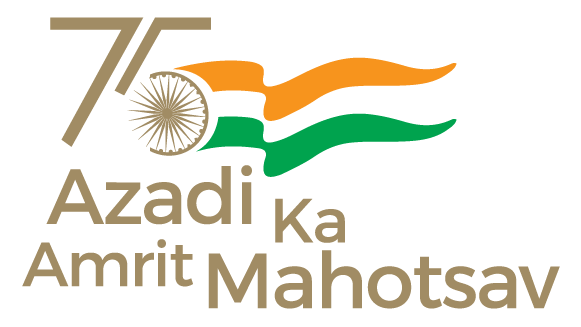Ministry of Women and Child Development

Measurement of over 7 Crore children shows wasting at about one-third of that used in Global Hunger Index
Global Hunger Index continues to be an erroneous measure of hunger with serious methodological issues and shows a malafide intent
Government is committed to ensure food security of its citizens
Posted On: 12 OCT 2023 6:45PM by PIB Delhi
The Government of India has prioritized several key activities to address the challenge of malnutrition under Mission Saksham Anganwadi and Poshan 2.0 (Mission Poshan 2.0). The Ministry of Women and Child Development developed and deployed the ‘Poshan Tracker’ ICT Application as an important governance tool. To date, more than 13.96 Lakh (1.396 Million) Anganwadi Centres are registered on the application, benefitting over 10.3 Crore (103 Million) beneficiaries, including pregnant women, lactating mothers, children under 6 years, and adolescent girls. The Poshan Tracker has incorporated WHO’s expanded tables, which provide day-based z-scores, to dynamically determine stunting, wasting, underweight, and obesity status based on a child’s height, weight, gender, and age. Anganwadi Workers have been trained by medical professionals at District level and also through World Bank, Bill Milinda & Gates Foundation, etc. to measure growth parameters in the Anganwadi Centres for which growth measuring devices have been provided in every Anganwadi of the country.
Several key international organizations such as UNICEF, WHO, and the World Bank have acknowledged the Poshan Tracker as a game-changer in the area of nutrition. The World Bank and UNICEF have collaborated closely with the Ministry to support the operationalization of the Poshan Tracker. WHO has recognized the Poshan Tracker as an exemplary platform for flawlessly collecting routine administrative data on nutrition. Under India’s G-20 Presidency, Member States took note of India’s Poshan Tracker, the unique digital platform which seeks to digitize data near-real time monitoring and enabling policies for targeted intervention.
Since April 2023, the measurement data of children under 5 years uploaded on Poshan Tracker has consistently increased – from 6.34 Crore (63.4 Million) in April 2023 to 7.24 Crore (72.4 Million) in September 2023. The percentage of child wasting, as seen on the Poshan Tracker, has been consistently below 7.2%, month-on-month, as compared to the value of 18.7% used for child wasting in the Global Hunger Index 2023.
The Global Hunger Index continues to be a flawed measure of ‘Hunger’ and does not reflect India’s true position. The Global Hunger Report 2023 released by Concern Worldwide and Welt Hunger Hilfe, Non-Government Organisations from Ireland and Germany respectively, has ranked India at 111 among 125 countries. The index is an erroneous measure of hunger and suffers from serious methodological issues. Three out of the four indicators used for calculation of the index are related to the health of children and cannot be representative of the entire population. The fourth and most important indicator ‘Proportion of Undernourished (PoU) population’ is based on an opinion poll conducted on a very small sample size of 3000.
“The State of Food Security and Nutrition in the World 2023 (SOFI 2023)” report released by FAO estimates PoU for India at 16.6%. The FAO estimate is based on “Food Insecurity Experience Scale (FIES)” survey conducted through Gallop World Poll which is an “opinion poll” based on “8 questions” with a sample size of “3000 respondents”. The data collected from a miniscule sample for a country of India’s size through FIES has been used to compute PoU value for India which is not only wrong and unethical, it also reeks of obvious bias.
Owing to these flaws, FAO was asked not to use such estimates based on FIES survey data. The Ministry of Statistics and Programme Implementation has planned a pilot survey on FIES in consultation with FAO, Ministry of Agriculture and Farmers’ Welfare and Department of Food and Public Distribution. The Technical Group constituted for this purpose has suggested changes in the existing FIES module including questionnaire, sample design and sample size. However, despite the pilot survey being in process, continued use of FAO’s FIES based PoU estimate is regrettable.
Two other indicators, namely, Stunting and Wasting are outcomes of complex interactions of various other factors like sanitation, genetics, environment and utilisation of food intake apart from hunger which is taken as the causative/outcome factor for stunting and wasting in the GHI. Also, there is hardly any evidence that the fourth indicator, namely, child mortality is an outcome of hunger.
The Central Government launched Pradhan Mantri Garib Kalyan Anna Yojana (PMGKAY) with the specific purpose of ameliorating the hardships faced by the poor and needy due to economic disruptions caused by the COVID-19 outbreak in the country. The allocation of free food grains under PMGKAY was in addition to normal allocation done under the National Food Security Act (NFSA), 2013. A total quantity of approximately 1118 Lakh Metric Tonnes (111.8 Million Metric Tonnes) food grains had been allocated under PMGKAY (Phase I-VII) for the period of 28 months with a planned financial outlay of about Rs. 3.91 Lakh Crore (Rs. 3910 Billion) during FYs 2020-21 to 2022-23 benefitting nearly 80 Crore (800 Million) persons. Starting 1st January 2023, PMGKAY has been further extended for one year to provide food grains free of cost to AAY (Antyodaya Anna Yojna) households and PHH (Priority Households) beneficiaries under NFSA, 2013 with the likely expenditure of nearly Rs. 2 Lakh Crore (Rs. 2000 Billion). This is the largest food security programme in the world.
*****
SS/AKS
(Release ID: 1967164) Visitor Counter : 155




















